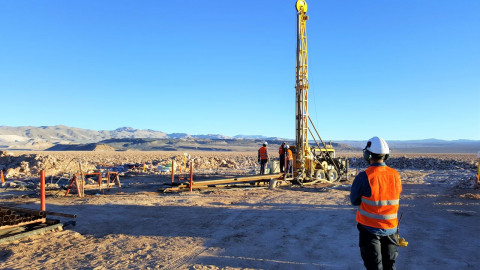Lake Resources, Ford ink non-binding MoU for Li offtake from the Kachi Project
Australia-based Lithium developer Lake Resources has announced that it has signed a non-binding Memorandum of Understanding (MoU) with Ford Motor Company for the offtake of approximately 25,000 tonnes per annum (TPA) of lithium from the Kachi Project.
Kachi comprises 705 sq km of leases and leases applications over a brine-bearing basin 20km long, 15km wide, and 400-800m deep centered.
Lisa Drake, Ford's vice president, EV Industrialization stated "As we've shared, Ford is sourcing deeper into the battery supply chain. This is one of several agreements we're exploring to help us secure raw materials to support our aggressive EV acceleration."
Promnitz, Lake's Managing Director said "Both Lake and Ford see this as an opportunity for a potential long-term agreement with the ability to scale up environmentally responsible production and participate in Lake's other projects to ensure high-quality lithium products are available to Ford. This MoU with Ford supports Lake's strategy to be a key independent supplier into global lithium supply chains and ensure the security of supply to customers."
Lake's Kachi Project is located in Argentina's Catamarca Province at the southern end of the Lithium Triangle, a world-renowned province responsible for 40% of global lithium production.
Using direct extraction technology provided by Lake's technology partner Lilac Solutions, Lake plans to produce at Kachi a sustainable, high-purity lithium carbonate product.
Lilac has developed and patented a new ion exchange technology to extract lithium from brines without the need for evaporation ponds. Lilac produces its ion exchange beads and delivers these beads to brine projects worldwide. The beads are loaded into tanks, brine has flowed through the tanks, and as the brine percolates through the beads, the beads absorb lithium out of the brine.
Once the beads are saturated with lithium, hydrochloric acid is used to flush out the lithium, yielding lithium chloride. Lithium chloride is the "crude oil" of lithium—the standard intermediary in every lithium brine project today. The lithium chloride is then processed on-site with conventional process equipment to yield a finished product.
In April 2020, Lake announced pre-feasibility study (PFS) results for Kachi, showing its potential to become a long-life, low-cost operation with an annual production target of 25,500 tonnes of battery-grade lithium carbonate using direct extraction technology. The results showed a high margin project, with an EBITDA margin of 62 percent, together with competitive capital and operating costs.




















